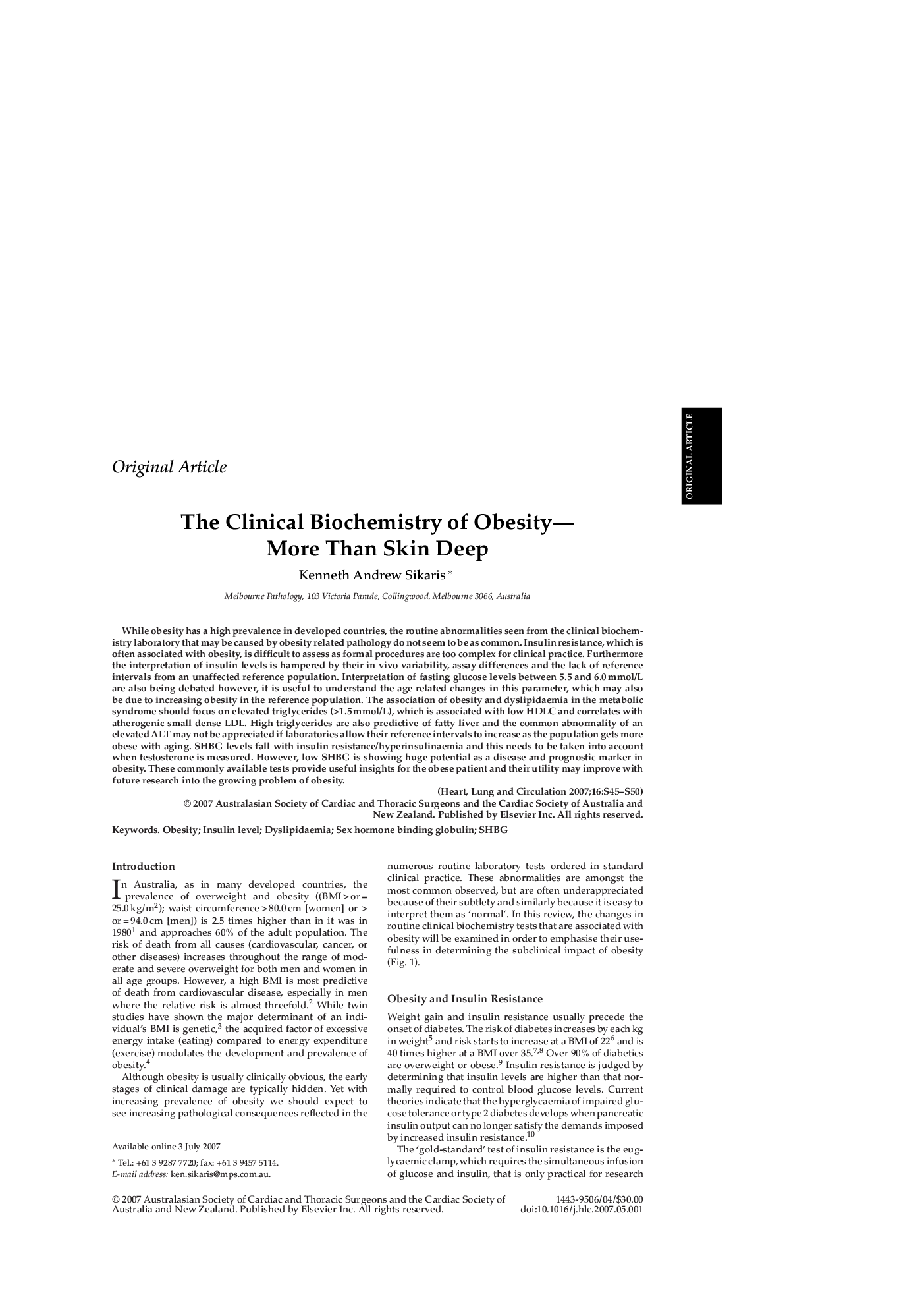| Article ID | Journal | Published Year | Pages | File Type |
|---|---|---|---|---|
| 2921415 | Heart, Lung and Circulation | 2007 | 6 Pages |
Abstract
While obesity has a high prevalence in developed countries, the routine abnormalities seen from the clinical biochemistry laboratory that may be caused by obesity related pathology do not seem to be as common. Insulin resistance, which is often associated with obesity, is difficult to assess as formal procedures are too complex for clinical practice. Furthermore the interpretation of insulin levels is hampered by their in vivo variability, assay differences and the lack of reference intervals from an unaffected reference population. Interpretation of fasting glucose levels between 5.5 and 6.0Â mmol/L are also being debated however, it is useful to understand the age related changes in this parameter, which may also be due to increasing obesity in the reference population. The association of obesity and dyslipidaemia in the metabolic syndrome should focus on elevated triglycerides (>1.5Â mmol/L), which is associated with low HDLC and correlates with atherogenic small dense LDL. High triglycerides are also predictive of fatty liver and the common abnormality of an elevated ALT may not be appreciated if laboratories allow their reference intervals to increase as the population gets more obese with aging. SHBG levels fall with insulin resistance/hyperinsulinaemia and this needs to be taken into account when testosterone is measured. However, low SHBG is showing huge potential as a disease and prognostic marker in obesity. These commonly available tests provide useful insights for the obese patient and their utility may improve with future research into the growing problem of obesity.
Related Topics
Health Sciences
Medicine and Dentistry
Cardiology and Cardiovascular Medicine
Authors
Kenneth Andrew Sikaris,
